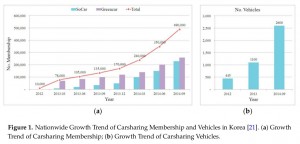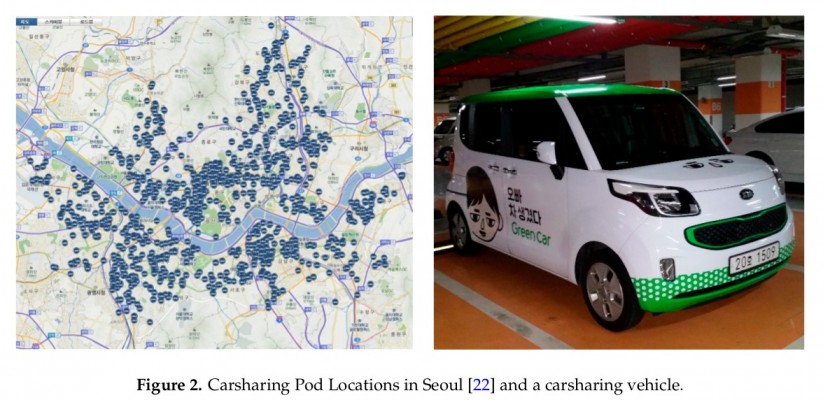Finding Factors that Influence Carsharing Usage: Case Study in Seoul
Finding Factors that Influence Carsharing Usage: Case Study in Seoul / Junhee Kang, Keeyeon Hwang and Sungjin Park (Hongik University). – Sustainability 2016, 8, 709 (12 p.) [formato PDF, 2,2 MB]. Open Access.
The goal of this research is to investigate the factors that affect carsharing demand. As a proxy for carsharing demand, the number of (booking) transactions made by carsharing users is counted based on the data from one of the two major carsharing operators in Seoul, Korea. In order to identify the factors influencing station-based carsharing usage, multiple linear regression modeling was performed with the number of carsharing transactions as a dependent variable and with the three groups of independent variables: Built environment, demographic, and transportation variables. Instead of using the locations of the pods, this study uses the residential locations of carsharing users who made transactions, and the final result analyzing 420 districts shows that six variables significantly influence carsharing usage. Carsharing demand is high in an area where a higher proportion of building floor area is used for business, and which has a higher proportion of young residents in their 20s and 30s. It can also be predicted that the area with more registered cars and less subway entrances will show higher carsharing demand. The analysis result also suggests that providing additional carsharing pods, especially pods that utilize city owned public parking facilities, will help promote carsharing usage. This research establishes a basis for future research efforts to forecast carsharing demand and to identify areas with high potential, especially in major Asian cities.

of Carsharing Membership and Vehicles
in Korea
The final model is quite different from what has been estimated based on American cities.
This research establishes a basis for future research efforts to forecast carsharing demand and find areas with high potential, especially in major Asian cities with urban conditions similar to Seoul. The analysis result shows that carsharing demand is high in an area where a higher proportion of builing floor area is used for business, and which has a higher proportion of young residents in their 20s and 30s. It can also be predicted that the area with more registered cars and less subway entrances will show higher carsharing demand.
